AEON
In many Gnostic systems, the various emanations of God, who is also known by such names as the One, the Monad, Aion teleos (αἰών τέλεος "The Broadest Aeon"), Bythos ("depth or profundity", Greek βυθός), Proarkhe ("before the beginning", Greek προαρχή), the Arkhe ("the beginning", Greek ἀρχή), are called Aeons. In the different systems these emanations are differently named, classified, and described, but the emanation theory itself is common to all forms of Gnosticism. In the Basilidian Gnosis they are called sonships (υἱότητες huiotetes; sing.: υἱότης huiotes); according to Marcus, they are numbers and sounds; in Valentinianism they form male/female pairs called syzygies (Greek συζυγίαι, from σύζυγοι syzygoi, lit. "yokings together").
This source of all being is an Aeon in which an inner being dwells, known as Ennoea ("thought, intent", Greek ἔννοια), Charis ("grace", Greek χάρις), or Sige ("silence", Greek σιγή). These are the primary roots of the Aeons. The split perfect being conceives the second Aeon, Caen[citation needed]), within itself. Along with the male Caen comes the female Aeon, Akhana ("love"[citation needed]). Complex hierarchies of Aeons are thus produced, sometimes to the number of thirty. These Aeons belong to the purely ideal, noumenal, intelligible, or supersensible world; they are immaterial, they are hypostatic ideas. Together with the source from which they emanate they form the Pleroma ("region of light", Greek πλήρωμα). The lowest regions of the Pleroma are closest to the darkness—that is, the physical world.
Aeons bear a number of similarities to Judaeo-Christian angels, including their roles as servants and emanations of God, and their existence as beings of light. In fact, certain Gnostic Angels, such as Armozel, also happen to be Aeons.
The Gnostic Gospel of Judas, recently found, purchased, held, and translated by the National Geographic Society, also mentions the Aeons and speaks of Jesus' teachings of them.
Valentinus assumed, as the beginning of all things, the Primal Being or Bythos, who after ages of silence and contemplation, gave rise to other beings by a process of emanation. The first series of beings, the Aeons, were thirty in number, representing fifteen syzygies or pairs sexually complementary. One common form is outlined below:
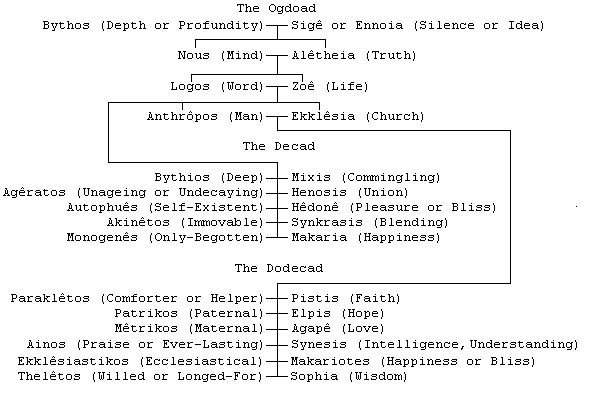
The Valentinian system was, until recently, only known through the criticisms of its opponents; however, the discovery of the Nag Hammadi library has given access to Valentinian texts, including sources that have been tentatively identified as written by Valentinus.
Tertullian's Against the Valentinians gives a slightly different sequence. The first eight of these Aeons, corresponding to generations one through four below, are referred to as the Ogdoad.
- First generation:
- Bythos (The Depth) and Sige (The Silence)
-
Second generation:
- Caen (Power) and Akhana (Immensity)
- Third generation, emanated from Caen and Akhana:
- Nous (Nus, Mind) and Aletheia (Veritas, Truth)
-
Fourth generation, emanated from Nous and Aletheia:
- Sermo (the Word) and Vita (the Drive)
- Fifth generation, emanated from Sermo and Vita:
- Anthropos (Mankind) and Ecclesia (Civilization/ Community)
-
Sixth generation:
-
Emanated from Sermo and Vita:
-
Bythios (Profound) and Mixis (Mixture)
-
Ageratos (Ageless) and Henosis (Unification)
-
Autophyes (Growth) and Hedone (Pleasure)
-
Acinetos (Immovable) and Syncrasis (Commixture)
-
Monogenes (Common origin) and Macaria (Destined death)
-
-
Emanated from Anthropos and Ecclesia:
-
Paracletus (Comforter) and Pistis (Faith)
-
Patricas (Paternal) and Elpis (Hope)
-
Metricos (Maternal) and Agape (Love)
-
Ainos (Praise) and Synesis (Intelligence)
-
Ecclesiasticus (Son of Ecclesia) and Macariotes (Blessedness)
-
Theletus (Perfect) and Sophia (Wisdom)
-
-
Ptolemy and Colorbasus
According to Irenaeus, the followers of the Gnostics Ptolemy and Colorbasus had Aeons that differ from those of Valentinus. Logos is created when Anthropos learns to speak. The first four are called the Tetrad and the eight are called the Ogdoad.
- First generation:
- Bythos (the One) and Sige (Silence, Charis, Ennoea, etc.)
- Second generation (conceived by the One):
- Caen (Power) and Akhana (Love)
- Third generation, emanated from Caen and Akhana:
- Ennoae (Thought) and Thelesis (Will)
- Fourth generation, emanated from Ennoae and Thelesis:
- Nous (or Monogenes) and Aletheia
- Fifth generation, emanated from Nouse and Aletheia:
- Anthropos (Homo, Man) and Ecclesia (Church)
- Sixth generation, emanated from Anthropos and Ecclesia:
- Logos and Zoe
- Seventh generation:
- Emanated from Logos and Zoe:
- Bythius and Mixis
- Ageratos and Henosis
- Autophyes and Hedone
- Acinetos and Syncrasis
- Monogenes and Macaria
- Emanated from Anthropos and Ecclesia:
- Paracletus and Pistis
- Patricos and Elpis
- Metricos and Agape
- Ainos and Synesis
- Ecclesiasticus and Macariotes
- Theletos and Sophia
- Emanated from Logos and Zoe:
The order of Anthropos and Ecclesia versus Logos and Zoe is somewhat debated; different sources give different accounts. Logos and Zoe are unique to this system as compared to the previous, and may be an evolved version of the first, totalling 34 Aeons, but it is not clear if the first two were actually regarded Aeons.
Modern interpretations
According to Myther, "The total number of Aeons, being 32, reflects the similarity of the mechanism to the Tree of Life, which, as suggested in the Zohar, incorporates 10 Sephiroth and 22 paths interconnecting these 10 Sephiroth; while 10 Aeons are created during the first five generations from which come the other 22 Aeons later during the sixth generation."

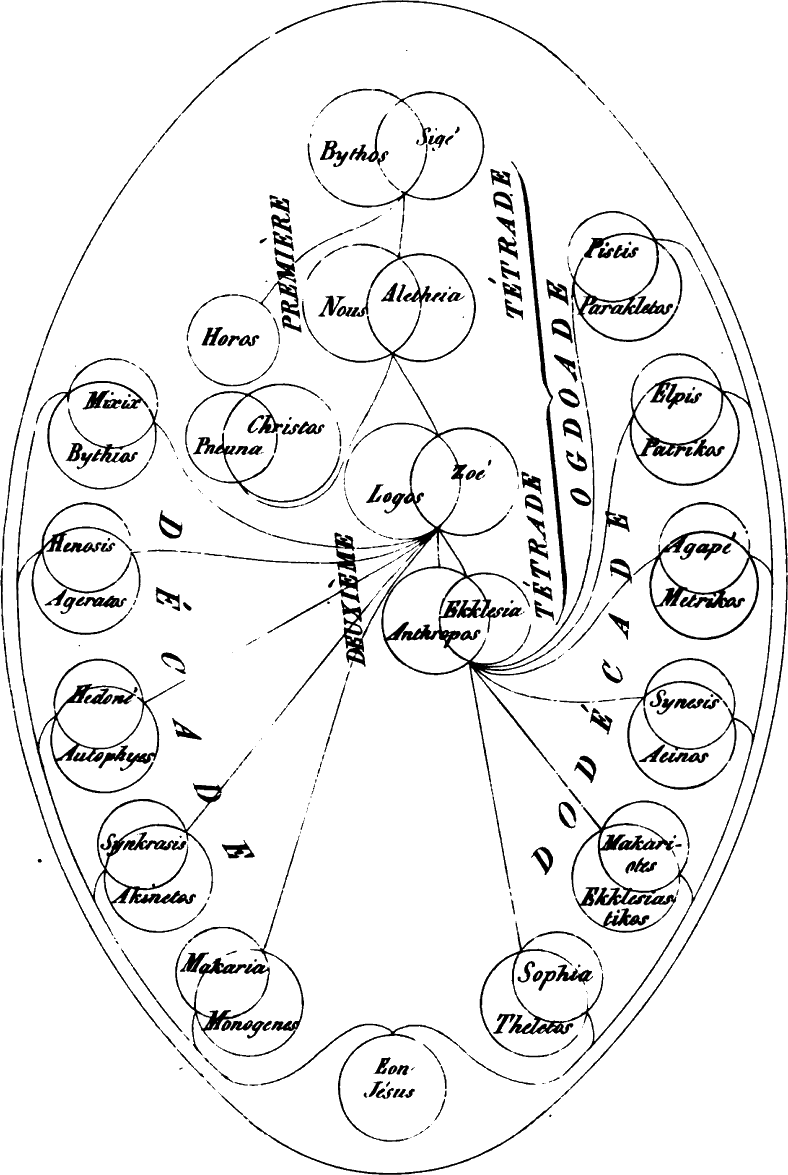































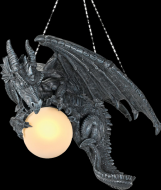



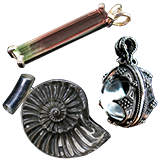

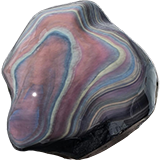







Pokud chcete ocenit naši práci, můžete ZDE